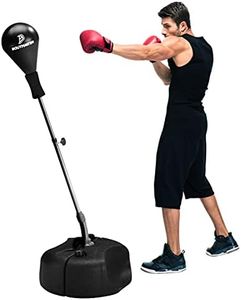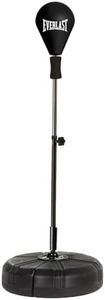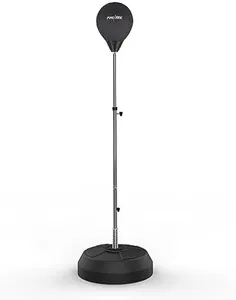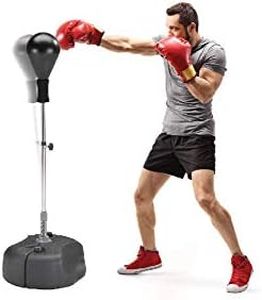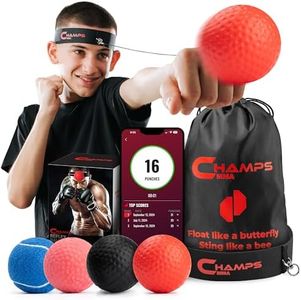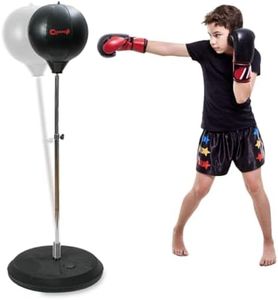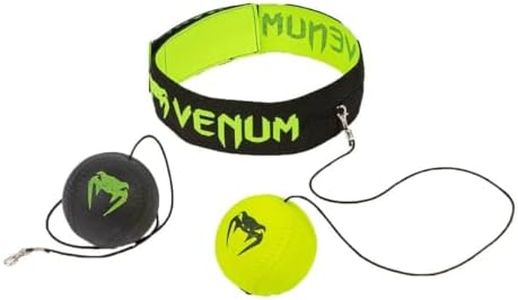We Use CookiesWe use cookies to enhance the security, performance,
functionality and for analytical and promotional activities. By continuing to browse this site you
are agreeing to our privacy policy
10 Best Boxing Reflex Bag
From leading brands and best sellers available on the web.Buying Guide for the Best Boxing Reflex Bag
Buying a boxing reflex bag can help you improve your speed, coordination, reaction time, and overall boxing skills. These bags are great for beginners and experienced boxers alike, and choosing the right one will ensure you make the most of your training sessions. The right reflex bag should match your skill level, available space, and specific training goals. Understanding the key specifications will help you choose a bag that offers durability, appropriate difficulty, and fits well within your workout area.Adjustability (Height)Adjustability refers to whether you can change the height of the reflex bag to suit your preference or training routines. This is important as it allows the equipment to be used by people of different heights and enables varied workouts for different target areas (head, torso, etc). Height options often range from about chest level up to above the head. For kids and beginners or those who want versatility, a bag with a wide height adjustment range is ideal. For adults focusing on precise training, a more limited but sturdy adjustment might be enough.
Base StabilityBase stability describes how steady the bottom part of the reflex bag is during use. Some bases are weighted or can be filled with sand or water to keep the bag from tipping over or sliding around. This is crucial if you want a realistic training experience or if you hit with significant force. Heavier or fillable bases provide more resistance to movement and are better for powerful users, while lighter bases may be easier to move but can topple if hit too hard.
Spring Quality and PlacementThe spring allows the bag to bounce back and forth when struck, mimicking a real opponent's movements. A stiffer spring means faster return and higher challenge, while a looser one offers a slower, easier pace for beginners. Some bags have springs at the base, middle, or even double springs for a more unpredictable rebound. For fast-paced, advanced training, opt for a high-quality spring with quick response. For learning coordination or if you’re new, you’ll benefit from a bag with a softer, slower spring.
Target Material and PaddingThe target (often the ball or bag at the top) can be made from materials like synthetic leather, foam, or real leather. Padding affects both durability and comfort—more padding provides safety for your hands, while shoddier material may wear down quickly. For frequent or intense training, choose a well-padded and durable target. For occasional, light use, simpler materials should suffice.
Assembly and PortabilityAssembly refers to how easy it is to set up or take apart the reflex bag. Portability describes how easy it is to move from place to place. Some bags are meant for permanent spaces, while others can be collapsed or easily relocated. If you need to clear space often or plan to use the bag in multiple locations, look for a model known for easy assembly and good portability. If it will stay in one spot, a more robust, stationary bag is a good fit.
